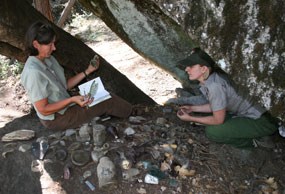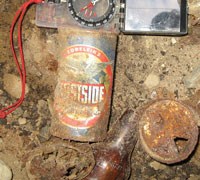
What is a cultural resource? Cultural resources are objects, landscape, stories, structures, and documents that tell the story of a place. Unlike a natural resource (like plants and animals), a cultural resource cannot be renewed. A disturbed or destroyed cultural resource is gone forever. Many federal and state laws are in place to protect cultural resources. The National Park Service makes protecting “historical objects” part of its mission to protect public lands. If you see someone damaging historical/archeological sites, please contact a ranger immediately to report the incident. 
How can you help protect cultural resources?
|
Last updated: August 11, 2017
